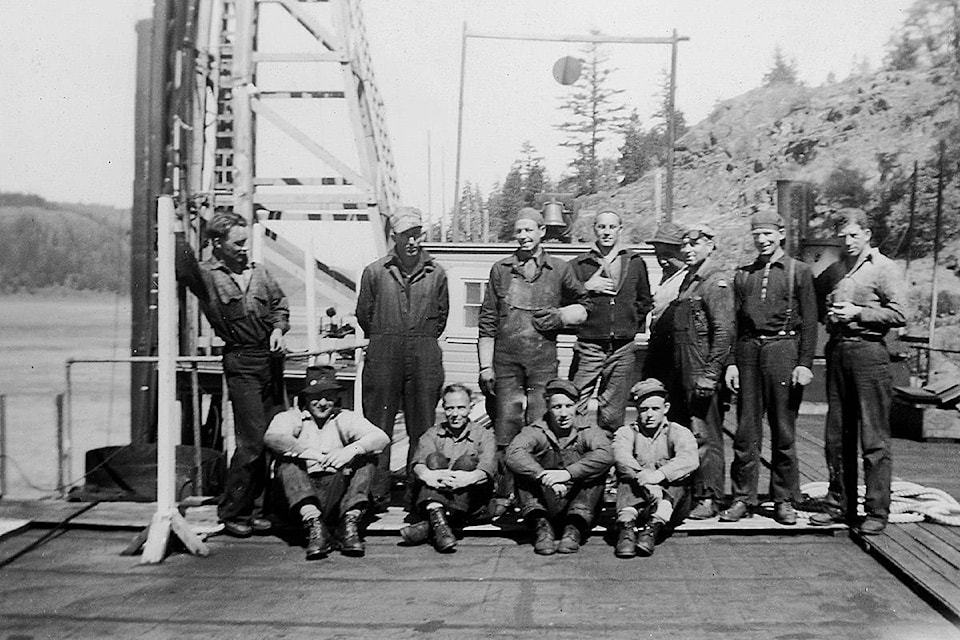By Erika Anderson,
Museum at Campbell River
The destruction of Ripple Rock is one of Campbell River’s most celebrated historical events.
It’s a tale of human ingenuity, and well, it is fun to watch something that big blow up. We love to celebrate this success, but we should also reflect on its true cost. The successful detonation of Ripple Rock wasn’t the first attempt to destroy this marine hazard.
In early 1945, a crew working for Vancouver’s B.C. Bridge and Dredging Company was attempting to reduce the danger of Ripple Rock. They planned to drill into the rock from the surface and plant explosives and then, after detonation, the rubble would be removed by dredges and scows. Huge anchors would hold the boat in place as it drilled. The cost of the project was estimated to be $375,000. A special scow (flat-bottomed boat used for dredging) was built for the project. It was 150 feet long and 42 feet wide. Holes would be drilled six feet apart and then explosives would be inserted.
Trouble started early on in the project. Bill Davis worked on one of the tug boats when he was in his teens. It was war-time, so finding labourers for the project was difficult. Bill was only 14 at the time, but told them he was 16 to get the job as a tugboat engineer. He remembers clearly five attempts at using large concrete anchors, and at each attempt a new combination of cables, chains and swivels being used.
Bill describes the first attempt, when they did not yet realize how much they had underestimated the strength of the tides. “The tug boats got into place, in the four corners with the concrete blocks attached to the four corners of the barge with thick cables. They blew the whistle and we all dropped the cement blocks in the sea. We did this at slack tide. Then we all started to head back to Maude Island, and it was probably a half hour later that the barge started heading down Seymour Narrows. All of the big cables had broken.”
When the large anchors could not hold the scow in place, they tried to anchor the boat to the Vancouver Island side of Seymour Narrows. The cables became weakened by the vibrations caused by the rushing tides so then the cables were extended above the water. This caused challenges for mariners trying to navigate the area, and temporary restrictions were placed on marine traffic. A dam was being built near Maude Island to divert some flows to allow for drilling. With all the setbacks came huge cost over-runs.
On Friday, March 16, 1945, disaster struck. A crew that had been working on the Maude Island diversion project were being ferried across the passage to Menzies Bay during a fast-running rip tide. They had barely left Maude Island when their 28-foot boat overturned and 11 men were thrown into the water. Nine of the men disappeared into a whirlpool while the other two men clung to the boat. A search party was organized, but it was too late for the nine men that drowned. In the wake of the tragedy, the project was abandoned.
Ottawa decided at that point, that the million-dollar price tag and loss of life that had come with no progress on reducing the risk of Ripple Rock, was too steep and no more attempts would be made to blow up the underwater peaks. It would be 13 years before a new plan was enacted and the marine hazard was successfully reduced.
A short film about the destruction of Ripple Rock can be viewed at the Museum at Campbell River’s Van Isle Theatre.
